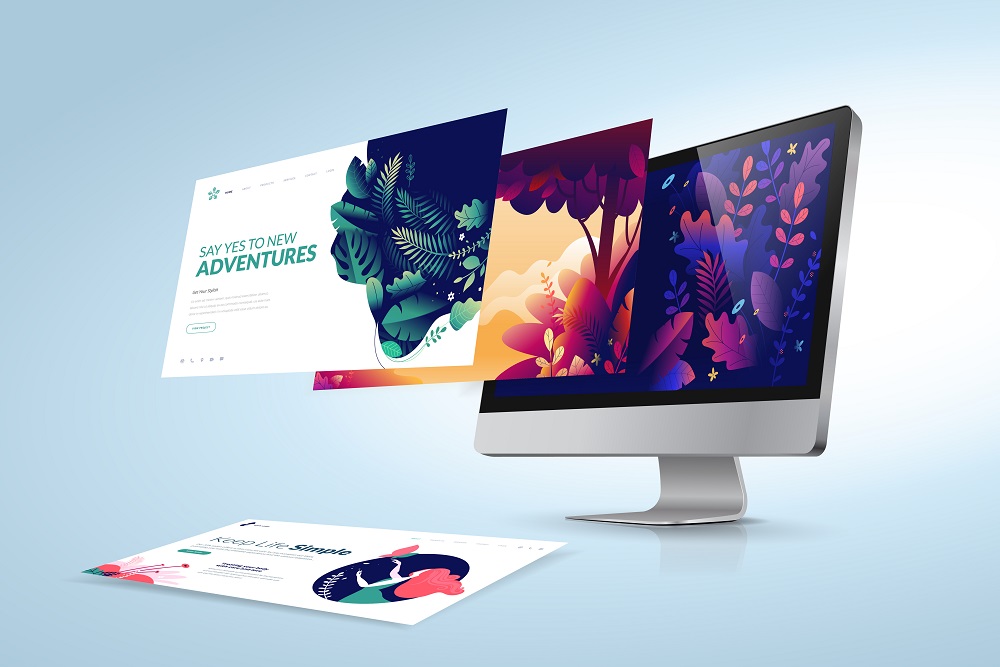Tips for Image Optimisation
If your website uses images, then there’s no doubt that you’re doing something right - but are those images fully supporting the user experience on your website?
Images are a valuable tool to use on any website regardless of your in
dustry, whether they are designed to entice and sell, to liven up a bland industry or topic, or to inspire users in some way. But what does it mean to optimise them - and how does this help the user experience on your website?
What Is Image Optimisation?
When you select and place images on your website, you are putting them there for a reason - to elevate the customer’s experience on your site and create a visual which entices them to stay on your site and maybe even buy something. But did you know that these same images can be harming the overall customer experience through slow loads times and a lack of site stability?
If you’ve checked out any of our other blogs, you might have heard us talk about Google’s Core Web Vitals before. Launched in 2020, this new algorithm outlines what Google is looking for to rank a website highly - and it’s all about user experience, site stability, responsiveness, and load times.
So, introducing image optimisation. The process through which you can decrease the size of the image file without impacting its quality or presentation on the site itself. By doing this, the image will require less data and so will load more quickly, subsequently enhancing the experience and Google’s opinion of your website.
The Importance Of Image Optimisation
How long will you personally wait for an image or a webpage to load, before you give up and try another site or shut your search down completely?
Image Optimisation is the very step which enables businesses to prevent this loss of website visitors or business, by ensuring that pages load within the acceptable wait time of about 2 seconds for modern day users.
Now, let’s look a little bit more closely at the process of image optimisation, so as to work out the benefits and the importance of this process as a whole.
Image optimisation is important because:
- It enables the webpage to load quickly, allowing the user to browse efficiently without frustrating hold-ups
- It allows your website server to store more images and more content for your website, rather than taking up all the space with large image files
With that said, how do you actually achieve image optimisation in a way that will benefit your website and its visitors?
How To Optimise Your Images
Optimised images leads to a better onsite experience for users and customers - and here’s what you need to do.
- Find out your site speed starting point.
By ascertaining the site speed before you optimise your images, you will be able to look back and see how better the overall experience is for users after you’ve completed this checklist. Google Page Speed Insight is a great tool because it is conducted and run by Google itself - arguably your biggest critic in the world of websites and optimisation.
The tool will also give you some tips and ideas on how best to improve your own site speed - which will likely include image optimisation alongside other small fixes.
- Get your image file type right.
We’re talking JPEGs, PNGs, and GIFs - and knowing which of these is the best format in which to store and upload your images. Some of our top tips for selecting the right image type include:
- If you need your image to have a transparent background, for example a logo image file, upload it as a PNG.
- JPEG images tend to be a good all-rounder for websites, as they allow for high quality images with a small size.
- GIFs are engaging and fun but will take up more space - so use them sparingly.
For more questions on image file types, feel free to get in touch with us to discuss.
- Resize your images.
Far too often we see website owners uploading photos directly from a camera or smartphone to their website without resizing them first - but the fact is, resizing before upload is much easier and more time efficient. Photoshop and Canva are both good options for getting this sorted quickly and easily.
- Compress your ready-to-go image before uploading.
This is one step which is often overlooked, but it is important for avoiding that slow load time of photos and images on websites - especially those which gradually appear while the user waits (because SPOILER ALERT, the user will not wait!)
Compressing images can be done using a number of tools, many of which can be found online and will depend on your device.
- Too many images? Lose some!
The final step in the process is a test to see how quickly your webpage loads with all of the above points actioned. This is a time to bring in some constructive criticism from colleagues or friends and family - and if they think there are too many visuals on the page, then don’t be afraid to cut some. White space has become a big part of web design in 2021 and will continue to grow in popularity thanks to its ability to allow users to digest and really understand the breakdown of information on a page.
Looking for help with your image optimisation and other online touchpoints? We’re here to help!

